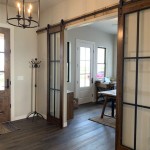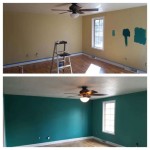How To Describe Your Interior Design Style
Defining one's interior design style can be challenging. With numerous styles and sub-styles, pinpointing specific preferences requires a structured approach. This process involves understanding the elements of design, researching different styles, and analyzing personal tastes to create a cohesive and personalized space.
Understanding the Elements of Design
Before delving into specific styles, a foundational understanding of design elements is crucial. These elements are the building blocks of any design scheme and include:
Color: Color palettes evoke specific moods and atmospheres. Understanding the impact of different hues, tones, and shades is vital for creating the desired ambiance.
Form: This refers to the shapes and structures within a space, from furniture silhouettes to architectural details. Considering the form of objects contributes significantly to the overall aesthetic.
Line: Lines create visual pathways and impact the perception of space. Horizontal lines create a sense of width, while vertical lines emphasize height. Curved lines introduce softness and fluidity.
Texture: Texture introduces tactile and visual depth. Combining different textures, such as smooth marble and rough-hewn wood, adds complexity and interest.
Pattern: Patterns introduce visual rhythm and personality. From bold geometric prints to delicate floral motifs, patterns play a significant role in defining a style.
Space: The way space is utilized is a key element. This includes the arrangement of furniture, the flow between areas, and the overall sense of spaciousness or intimacy.
Light: Lighting dramatically influences the mood and functionality of a space. Natural light, ambient lighting, and task lighting all contribute to the overall design aesthetic.
Researching Different Interior Design Styles
Once familiar with the elements of design, exploring various interior design styles becomes more meaningful. Some popular styles include:
Modern: Characterized by clean lines, simple forms, and a focus on functionality. Color palettes are often neutral with pops of bold color. Materials like metal, glass, and concrete are commonly used.
Contemporary: Reflects current trends and incorporates a mix of styles. It is constantly evolving and often features bold colors, unique textures, and artistic elements.
Minimalist: Emphasizes simplicity and functionality with a stripped-down aesthetic. Color palettes are typically neutral, and clutter is minimized.
Traditional: Inspired by classic European design, often featuring ornate details, rich fabrics, and dark wood furniture. Symmetry and balance are key elements.
Transitional: Blends traditional and modern elements, creating a balanced and timeless look. Neutral color palettes, classic furniture silhouettes, and contemporary accents are common.
Bohemian: Embraces a free-spirited and eclectic aesthetic, incorporating global influences, vibrant colors, and layered textures.
Scandinavian: Emphasizes functionality, simplicity, and natural light. Color palettes are light and airy, with a focus on natural materials like wood and wool.
Industrial: Inspired by factories and warehouses, featuring exposed brick, metal piping, and vintage furniture. Color palettes are often neutral with pops of bold color.
Farmhouse: Creates a warm and inviting atmosphere with rustic elements, natural materials, and a focus on practicality. Neutral color palettes and vintage accents are common.
Analyzing Personal Tastes
Identifying preferred design elements and styles involves careful self-reflection. Consider the following:
Existing Decor: Analyzing current furnishings and decor provides insights into existing preferences. Identify common themes in color, texture, and style.
Inspiration Sources: Gathering inspiration from magazines, websites, and social media platforms helps visualize desired aesthetics. Create mood boards or save images that resonate.
Lifestyle and Needs: Consider how the space will be used and the desired atmosphere. A family home requires different design considerations than a minimalist apartment.
Color Preferences: Identifying preferred color palettes is crucial for creating a cohesive design. Consider the psychological impact of different colors and how they align with personal preferences.
Material Preferences: Consider the textures and finishes that appeal most. Do natural materials like wood and stone resonate, or are sleek metal and glass preferred?
Creating a Cohesive Design Narrative
Once individual preferences are identified, the next step is to create a cohesive design narrative. This involves combining preferred elements and styles to create a unified and personalized space. Consider the following:
Balance and Harmony: Strive for balance in the use of color, texture, and pattern. Avoid overwhelming the space with too many competing elements.
Focal Points: Create focal points to draw the eye and anchor the design. This could be a fireplace, a piece of artwork, or a statement piece of furniture.
Flow and Functionality: Ensure the space is functional and easy to navigate. Consider the flow of traffic and the placement of furniture.
Personal Touches: Incorporate personal items and accessories to add character and individuality to the space. These details make the space feel truly unique.
Describing one's interior design style is an evolving process. By understanding design elements, researching various styles, and analyzing personal preferences, individuals can create spaces that reflect their unique personalities and lifestyles. This process allows for a more informed approach to decorating and renovating, resulting in spaces that are both aesthetically pleasing and functional.

Design Styles Defined Putting Your Style Into Words Rebecca Ward

How To Choose An Interior Design Style The Beauty Revival

A Guide To Discovering Your Unique Home Design Style Zevy Joy

What S Your Design Style

What Does Your Interior Design Style Say About You

A Guide To Interior Design Styles How Find Your Unique Home Decor Style Primer

How To Find Your Interior Design Style 4 Easy Ways

How To Find Your Personal Decor Style The Everygirl

Why Is It Important To Determine Your Design Style Cristina Isabel

How To Discover Your Interior Design Style Nadine Stay
Related Posts








